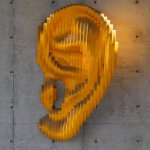
News • Smart glasses to support the ears
AI-powered lip-reading to advance hearing aids
To help people with hearing loss, researchers develop an AI-powered lip-reading camera that translates lip movements into sound. The device could also work in areas with a lot of background noise.



































